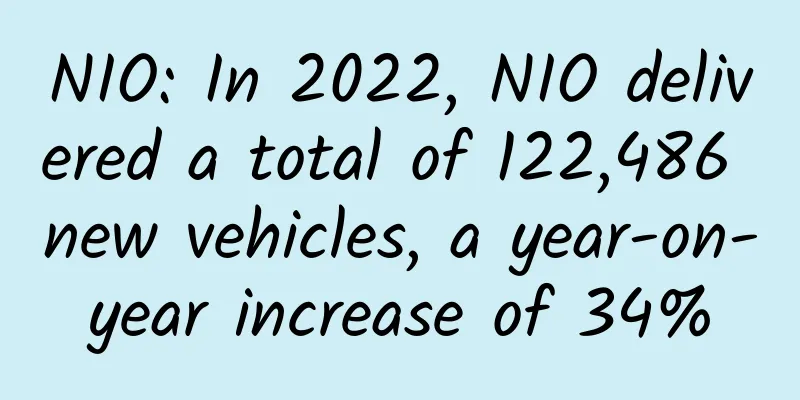Premature foldable phone: a fear-based innovation

|
In four months, Royole, Samsung, and Huawei have successively released foldable phones, and the sci-fi fantasy that has long existed in people's memory has taken a step forward. However, the prices are higher than one another, with FlexPai starting at RMB 8,999, Samsung starting at RMB 13,300 (US$1,980), and Huawei Mate X priced at RMB 17,500 (EUR 2,299). In terms of configuration, Samsung and Huawei have continued their previous high standards. Huawei Mate X is equipped with Kirin 980 processor, 8-inch wraparound OLED display, and 7nm 5G multi-mode terminal chip; Galaxy Fold has two built-in batteries with a total of 4380 mAh, a 7nm processor, and up to 12GB of RAM; Royole also delivered impressive results in fast charging, chips, and systems.
However, compared with the average price of US$377 (approximately RMB 2,736) for mobile phones in the Chinese market in the first quarter announced by relevant research institutions, the "sky-high prices" of tens of thousands of yuan are bound to cause heated discussions. Why is the price so high? Is flexible screen technology mature enough to support folding screen innovation? Why has premature technology become an overheated trend? What conditions does a true experience upgrade depend on? These questions are not only questions in the minds of consumers who buy with money, but also questions that folding screen mobile phone manufacturers must answer. Yield rate: an inevitable climb "The yield rate is too low, so it will be expensive." Li Si (pseudonym), a practitioner in the flexible screen industry, gave an explanation: "Except for Royole, the folding screens on the market currently have the same technical route as the existing curved screens. They all use the LTPS solution for flexible AMOLED. There are some risks in using this technology to make folding screens." In terms of screen supply, Royole uses its self-developed cicada-wing flexible screen, which is based on the technical route of oxide TFT. Although Samsung uses its self-developed Infinity Flex Display, Huawei uses the flexible screen provided by third-party supplier BOE, but the technical path is the same. Specifically, Li Si gave two major factors that affect the yield rate of the LTPS solution. First, the silicon material in the TFT device and the transparent conductive material ITO are at risk of brittle cracking during repeated folding. Once brittle cracking occurs, irreparable defects such as bad pixels or broken wires will appear. Secondly, the requirements for polarizers and protective covers of folding screens are higher than those of curved screens. The stress of the protective cover after being attached to the folding screen during the folding process will also have an impact. But no matter what kind of technology, the yield rate is the biggest factor restricting the price. "Royole's mobile phone may have been priced like this in order to compete with the iPhone XS. In fact, it should be losing money in terms of cost." Li Si believes that this is also why not many people actually get FlexPai. He put the yield rate climbing to a "critical" position: "If foldable screen mobile phones are to be widely popularized, the display panel yield improvement and price reduction are key factors. Some manufacturers want to avoid some detours by poaching people, but the process of yield rate climbing is inevitable." Premature birth: a host of problems Expensiveness is not the only problem. "I don't care about camera, fast charging, chips, etc. Scratch resistance and service life are the most important parameters for flexible screen phones. Due to the technical particularity of the flexible screen itself, these are more difficult technical points to solve. You should care about the Mohs hardness that can reach several H." Li Si emphasized. In terms of scratch resistance, the current protective cover of the folding screen is made of a plastic film similar to transparent polyimide (PI), and then a protective layer is coated on it, which requires the polymer material of the protective layer to be both flexible and hard. Li Si introduced that the current research direction is to replace the current PI film with a new material with stronger scratch resistance, or to apply a more wear-resistant nano-coating on PI to improve scratch resistance. However, whether such a solution can be comparable to the "Corning Gorilla Glass" currently used in conventional mobile phones remains a question. 200,000 folding tests, 100,000 folding tests, these numbers appeared prominently at the manufacturers' press conferences. Mobile phone manufacturers are undoubtedly emphasizing: We are also concerned about issues such as service life and number of folding times. For Royole, which uses an oxide solution, PPI (Pixels Per Inch) is also a concern. The PPI of 308 announced by Royole is the limit of this material on the market, but the PPI of common mobile phone screens is now close to 500. It is not just the technologies related to the flexible screen that have various problems. Some performance related to the phone itself is also being questioned. A mobile phone industry practitioner said: "As a frequently used tool, the mobile phone needs to consider many experience factors, and it is easy for shortcomings to offset strengths. As a tablet, the weight of the new iPad Pro is about 400g. Generally, weight is positively correlated with battery life. If the weight is reduced, does it mean that the battery life will be compromised?" Fear-based innovation: using foldable screens to open up new growth points So why are people still flocking to it? Li Si said that the foldable form factor is a phone, and the unfolded form factor is a tablet, which is also intended to expand the product's usage scope and open up new growth points. In order to achieve differentiated competition, Android phone manufacturers are scrambling to release foldable screen phones after obtaining support from panel manufacturers, which is also "forced". According to relevant data, in 2018, except for Xiaomi and Huawei, which actively expanded overseas markets and saw an increase in mobile phone shipments, Apple and Samsung both saw negative growth. The sales volume for the whole year of 2018 was 4.1% lower than that of 2017. The support of major manufacturers for achieving mass production is also well documented. In September 2018, Visionox announced that its flexible AMOLED "full screen" product was successfully launched, and officially started supplying to the downstream smartphone industry chain; in November, BOE's 6th generation flexible AMOLED production line in Chengdu officially went into mass production; Royole showed signs of starting mass production on June 6, 2018. Relevant information shows that at that time, Royole had invested a total of about 11 billion yuan in Shenzhen to build the world's first large-scale mass production line of quasi-sixth generation fully flexible displays, with a full production scale of more than 50 million flexible displays per year. An Internet industry observer called this "fear-based innovation in the mobile phone industry": increasingly difficult hardware innovation and production pressures have forced major mobile phone manufacturers to create some new momentum and produce foldable screen phones. As the industry enters a mature stage and profit margins continue to decline, the pursuit of high premiums has become a necessity. Experience improvement: hardware problem or software problem? There are also many folding screen enthusiasts. At the Royole press conference, every time CEO Liu Zihong released parameters, the audience cheered. Technology believers hold this view: "From these press conferences, we can't be sure how significant the product's bending is. But I think this direction is right, and innovation has some meaning." The day after Huawei Mate X was released, someone said in WeChat Moments that they would definitely buy it after it goes on sale, because the screen is large enough and portable, which will be convenient for reading text and watching movies. In fact, this is also the driving force behind all mobile phone manufacturers' belief that foldable screens have the potential to disrupt the market. These two advantages can allow mobile phones to quickly eat into the tablet market. But it is not easy to squeeze the market space of tablet computers. The real experience improvement depends not only on the upgrade and iteration of hardware technology, but also on the software. "To replace tablets, the adaptive matching of mobile phone systems and applications is required. At this point, the Android phone camp has a natural weakness. Due to the lack of Google services, Chrome OS cannot be used normally in China. Domestic Android tablets are just enlarged versions of Android phones." However, Li Si speculated that with the official release of foldable screen phones, Google may accelerate the pace of the death of Android and Chrome OS, and the new Fuchsia system will be able to run and switch freely on PCs, tablets and mobile phones. Android's weakness is precisely Apple's advantage. Both iPhone and iPad use iOS. If iPhone releases a foldable phone that can be folded into an iPhone and opened into an iPad, it will be a natural thing for the foldable iPhone to transform into a lightweight productivity tool. Perhaps this is why Apple updated its flexible screen technology patent. As Li Si said, it may be unpredictable how long it will take for flexible screen technology to mature and foldable screen phones to become popular. But with the heavy investment of major mobile phone manufacturers, the trend of foldable screen phones will definitely continue for a while. |
<<: 2019, smartphones have no savior
>>: Moving forward on the Android road
Recommend
[Startup Talk] I took over APP operation and promotion with zero experience. Let me talk about how I survived these two months.
Editor's note: This article is an anonymous c...
5 ways to increase the weight of Tik Tok!
So the question is, how to improve the weight of ...
Poplar and willow catkins are coming! Take this guide to prevent catkins for people with allergies
Willow catkins are coming! Keep this guide on how...
From community to e-commerce, how did Xiaohongshu become popular?
Since its establishment in June 2013, Xiaohongshu...
Peas, broad beans, green beans, snow peas, as well as the lotus beans and fennel beans described by Lu Xun, can you tell them apart?
As the saying goes: Eating beans in summer is bet...
Aspartame's "possible carcinogenicity" controversy continues, why do we have such a special liking for sweetness?
On July 14, 2023, the assessment report on the he...
Sewage treatment video Industrial water treatment video Industrial wastewater physical and chemical treatment video Send courseware for self-study
Sewage treatment video Industrial water treatment...
3 key points for copywriting, verified by 127 advertisers
In information flow advertising consultation, the...
[Dry stuff!] 】How to save money and improve efficiency in advertising? Data optimization "three axes"
How to extract value and potential opportunities ...
Although electrolyte water has benefits, don’t drink it as water!
Recently, following canned yellow peaches, electr...
Is it true that setting off fireworks can disinfect? Experts: The cost outweighs the gain
As the Spring Festival approaches, the discussion...
Attention! WeChat keyboard starts second round of internal testing to prevent eavesdropping and protect privacy
When we enter passwords on our phones, it is easy...
Tik Tok Operation Data Analysis Skills
Before we create a Douyin account, we must find a...
Why are many non-social apps so keen on social + content?
It is easy to create an APP, with a R&D team ...


![[Creative Cultivation Program] Fish are the evidence that the Tarim Basin actually "drifted" from the equator](/upload/images/67f263f75051b.webp)






